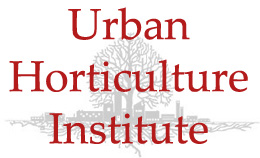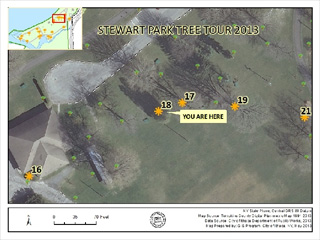Back to tree list
City of Ithaca
Stewart Park Tree Tour
American (Eastern) Arborvitae
Thuja occidentalis
When we look at this tree, we see an evergreen that is great for screening our house from our neighbor’s. When the Native Americans looked at this tree, they saw the raw materials for bows and canoes, baskets and cordage (rope making) and foliage high in vitamin C. When deer look at this tree, they see food.
Native to eastern North America, the arborvitae is an evergreen tree that can grow to 40-60’ in height, with a spread of 10-15’. It is commonly used in home landscapes as a screening hedge plant, often planted along property lines. The name, arborvitae, “means tree of life” which refers both to the evergreen foliage as well as the tree’s reputed medicinal benefits.
Many folks believe that if a tree is evergreen, the foliage remains on the tree indefinitely. The truth is that evergreen means that the foliage, in this case the green scale-like leaves, remain viable for more than one growing season. Arborvitae is a relatively slow growing evergreen, and its foliage is relished by deer in the winter. You can often see hedges that have been “pruned” up by deer, the green foliage stripped from the tree as high as a deer’s outstretched neck. This line, which can be quite pronounced, is called the browse line. In the winter, eastern arborvitae’s foliage can turn bronze from the cold.
If you choose to plant arborvitae, you will want to protect it from deer browsing, and, if you plant it in a hedge, be sure to allow for the plant’s radial growth. Planting too closely together can eventually weaken the trees’ ability to take up soil moisture and nutrients. Plant no closer than 6’ apart.
~contributed by Barb Neal
More info, images at the Woody Plants Database website.
Back to tree listFor more information about Ithaca City Trees, contact City Forester Jeanne Grace: jgrace@cityofithaca.org (607) 272-1718.

